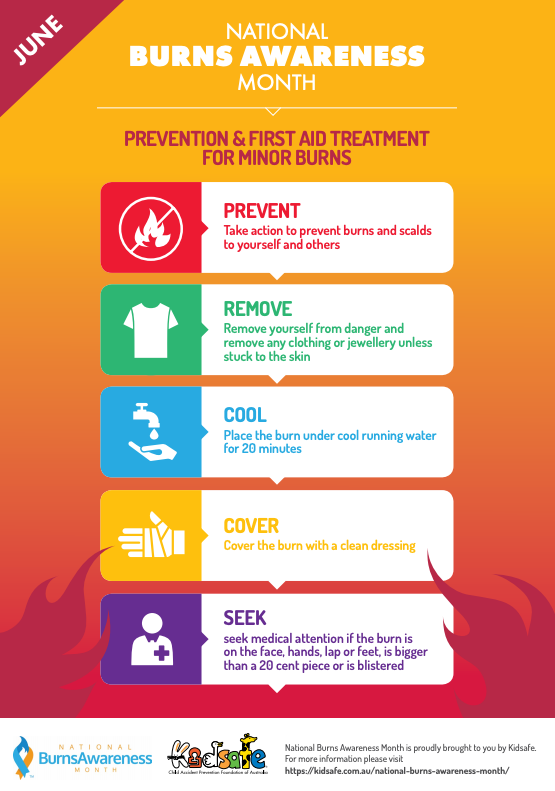Dad saves son from severe burns thanks to quick-thinking tip
![Almost half of children admitted to NHS burns services in the last five years were there because of food or liquid spillages. [Photo: Getty]](https://s.yimg.com/ny/api/res/1.2/kw6egAZksXdf1Tu79gL9Yg--/YXBwaWQ9aGlnaGxhbmRlcjt3PTk2MDtoPTY0MA--/https://media-mbst-pub-ue1.s3.amazonaws.com/creatr-uploaded-images/2019-10/e0a2a0b0-f013-11e9-9bfd-95a4d16c1fc7)
Between 2016 and 2017, nearly 1,000 Aussie and New Zealand kids were admitted to burns units, with scalds from hot liquid or steam being the most common cause.
On top of that, almost 80 per cent of serious burns and scalds to young children occurred within their own home, according to BRANZ Burns Registry of Australia and New Zealand’s Annual Report.
But most burns can be avoided if you know what action to take immediately after it happens, as UK father Scott Gray found out when disaster struck.
The father of two had left his cup of tea on a side table while playing with his sons, four-year-old Archie and Freddie, 2.
Within seconds, Archie had knocked the hot beverage off the table and onto his lap and it was because of his dad’s quick-thinking that the boy went on to make a full recovery.

Straight away Scott stripped off Archie’s clothing and plunged his legs into cold water in the bath, keeping the scalded areas submerged until the ambulance arrived.
“I’ve done first aid training, but nothing specifically related to burns, I just used my head and thought that if cold water works for a burnt finger or hand, then it must work for legs also,” he told the BBC.
“At the time I didn't know for sure I was taking the right action,” Scott added.
His actions were, however, in line with the recommended first aid for treating burns and Archie was able to make a full recovery at the specialist burns unit at Stoke Mandeville Hospital in Buckinghamshire, England.
Sadly, many other youngsters are instead left with permanent scarring and injuries due to insufficient aftercare.
Being burns aware
In the lead up to winter last year - a period when burns risk is high - Kidsafe, in collaboration with Australia National Burns Awareness Month, launched a campaign to educate parents and carers.
“The majority of burns are preventable. The kitchen is the most dangerous room of the house for a young child to be burned, usually occurring whilst near an adult preparing food or hot drinks,” Kidsafe Australia spokesperson, Holly Fitzgerald said.
“We need to be vigilant and take steps to restrict our children’s access to the kitchen during meal preparation times, to reduce the risk of a serious burn or scald occurring,” she added.
Other high-risk locations throughout the home include the living room, bathroom, outdoor kitchen or garden.
“At Kidsafe, we recommend placing hot drinks safely away from table or bench edges and never holding a child with a hot drink in hand. All it takes is for them to throw their arms around and spill the hot water onto themselves. Hot liquid at 60’C only takes one second to cause a third-degree burn to a child’s skin. Water boils at 100’C,” said Holly.
“If a burn happens, then it’s critical that cool running water is applied to the burn area for a minimum of 20 minutes. Knowing the correct first aid measures can make a significant difference in the child’s rehabilitation and long term outcome of the burn injury,” added Dr Warwick Teague, director of trauma at the Royal Children’s Hospital in Melbourne.

How to prevent and treat minor burns in children
Kidsafe has some key steps to prevent children from burns and how to treat minor burns if they do happen.
Prevent - take action to prevent burns and scalds
Remove - remove yourself from danger. Remove any clothing and jewellery from the burn area unless stuck to the skin
Cool - place the burn under cool, running water for twenty minutes. Items like ice, oil or butter should never be placed on a burn
Cover - cover the burn with a clean dressing
In the absence of cool running water, use a hydrogel like Burnaid® to help cool the burn and relieve pain.
Seek medical attention if the burn or scald is on the face, hands, feet, genitals or buttocks, if it is larger than a 20 cent coin or blistered.
Additional reporting by Caroline Allen.
Got a story tip or just want to get in touch? Email us at lifestyle.tips@verizonmedia.com
Want more lifestyle and celebrity news? Follow Yahoo Lifestyle on Facebook, Twitter and Instagram.
Or sign up to our daily newsletter here.

 Yahoo Lifestyle
Yahoo Lifestyle 
